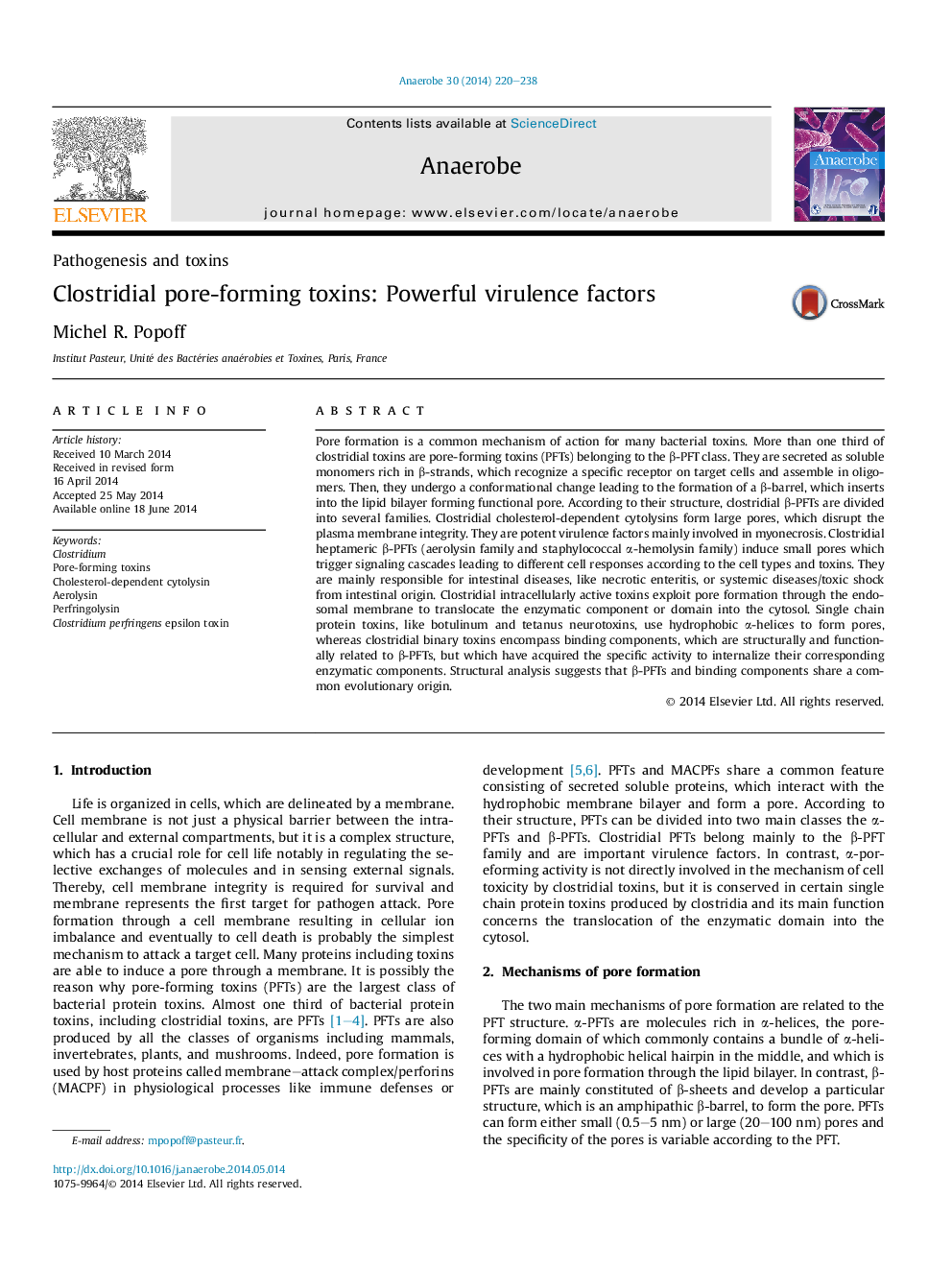| کد مقاله | کد نشریه | سال انتشار | مقاله انگلیسی | نسخه تمام متن |
|---|---|---|---|---|
| 3395016 | 1592833 | 2014 | 19 صفحه PDF | دانلود رایگان |
• More than one third of clostridial toxins are pore-forming toxins.
• Most of clostridial pore-forming toxins belong to the β-pore-forming toxin class.
• Cholesterol-dependent cytolysins form large pores mainly involved in myonecrosis.
• Clostridial heptameric β-pore-forming toxins induce small pores.
• Binding components of clostridial binary toxins are specific pore-forming toxins.
Pore formation is a common mechanism of action for many bacterial toxins. More than one third of clostridial toxins are pore-forming toxins (PFTs) belonging to the β-PFT class. They are secreted as soluble monomers rich in β-strands, which recognize a specific receptor on target cells and assemble in oligomers. Then, they undergo a conformational change leading to the formation of a β-barrel, which inserts into the lipid bilayer forming functional pore. According to their structure, clostridial β-PFTs are divided into several families. Clostridial cholesterol-dependent cytolysins form large pores, which disrupt the plasma membrane integrity. They are potent virulence factors mainly involved in myonecrosis. Clostridial heptameric β-PFTs (aerolysin family and staphylococcal α-hemolysin family) induce small pores which trigger signaling cascades leading to different cell responses according to the cell types and toxins. They are mainly responsible for intestinal diseases, like necrotic enteritis, or systemic diseases/toxic shock from intestinal origin. Clostridial intracellularly active toxins exploit pore formation through the endosomal membrane to translocate the enzymatic component or domain into the cytosol. Single chain protein toxins, like botulinum and tetanus neurotoxins, use hydrophobic α-helices to form pores, whereas clostridial binary toxins encompass binding components, which are structurally and functionally related to β-PFTs, but which have acquired the specific activity to internalize their corresponding enzymatic components. Structural analysis suggests that β-PFTs and binding components share a common evolutionary origin.
Journal: Anaerobe - Volume 30, December 2014, Pages 220–238
